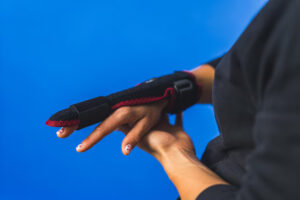Top Non-Surgical Treatments for Trigger Finger Offered by Orthopedic Experts
Trigger finger, medically known as stenosing tenosynovitis, is a common and often painful condition that causes a finger or thumb to catch or “lock” in a bent position. This occurs when the tendon sheath in the affected finger becomes inflamed and narrowed, making it difficult for the tendon to glide smoothly. While surgery is an option for severe cases, orthopedic experts often recommend a range of highly effective non-surgical treatments first. These conservative approaches aim to reduce inflammation, alleviate pain, and restore normal finger movement.

Here are the top non-surgical treatments for trigger finger:
1. Rest and Activity Modification
One of the simplest yet most crucial steps in managing trigger finger is to rest the affected hand and modify activities that aggravate the condition. Repetitive gripping, prolonged use of vibrating tools, or activities that require strong finger flexion can worsen symptoms. Orthopedic specialists will advise on specific activities to avoid and suggest alternative ways to perform tasks to reduce strain on the affected tendon. This allows the inflamed tendon and sheath to heal naturally.
2. Splinting
Wearing a splint, particularly at night, is a highly effective non-surgical treatment. A splint helps to keep the affected finger or thumb in an extended position, preventing it from bending and locking while you sleep. This resting position reduces irritation to the tendon and sheath, allowing inflammation to subside. Custom-made or off-the-shelf splints can be recommended by your orthopedic specialist or hand therapist to ensure proper fit and maximum benefit.
3. Non-Steroidal Anti-Inflammatory Drugs (NSAIDs)
Over-the-counter NSAIDs like ibuprofen or naproxen can help reduce pain and inflammation associated with trigger finger. While they may not resolve the underlying mechanical issue, they can provide significant symptomatic relief, especially in the early stages of the condition. Your orthopedic doctor can advise on the appropriate dosage and duration for NSAID use.
4. Corticosteroid Injections
Corticosteroid injections are one of the most common and effective non-surgical treatments for trigger finger. A corticosteroid, a powerful anti-inflammatory medication, is injected directly into the tendon sheath near the affected pulley. This helps to reduce swelling and inflammation, allowing the tendon to glide more freely. Many patients experience significant relief within a few days to a week after the injection. While highly effective, the effects may be temporary, and some patients might require a second injection or consider other options if symptoms recur.
5. Physical Therapy and Hand Exercises
A hand therapist or physical therapist can provide specific exercises designed to improve finger mobility and reduce stiffness. These exercises often focus on gentle stretching and gliding movements of the affected finger and hand. The therapist may also teach techniques to reduce swelling and improve overall hand function. While physical therapy alone might not resolve the locking, it’s an excellent complementary treatment, especially after inflammation has been reduced by other methods.
Conclusion
Non-surgical treatments for trigger finger are often the first line of defense and can be highly successful in alleviating symptoms and restoring normal hand function. Orthopedic experts emphasize a personalized approach, combining various methods like rest, splinting, NSAIDs, corticosteroid injections, and physical therapy, based on the severity and duration of the condition. Consulting with an orthopedic specialist is crucial to determine the most appropriate and effective treatment plan for your specific case, helping you regain comfort and full use of your hand without the need for invasive procedures.
FAQs:
1. What causes trigger finger?
Trigger finger is typically caused by inflammation and narrowing of the sheath surrounding the tendon in the affected finger, making it difficult for the tendon to glide smoothly. Repetitive gripping or prolonged use of the hand can contribute to its development.
2. How long does it take for non-surgical treatments to work?
The time frame varies. Rest and splinting can show improvement within a few weeks. Corticosteroid injections often provide relief within days to a week. Consistent application of these treatments is key.
3. Are corticosteroid injections painful?
You might feel a brief sting or pressure during the injection. Orthopedic specialists often use a local anesthetic to minimize discomfort. Any soreness after the injection is usually mild and temporary.
4. Can trigger finger go away on its own?
In some mild cases, especially with rest and activity modification, trigger finger can resolve spontaneously. However, for persistent or more severe symptoms, medical intervention is usually necessary.
5. When is surgery recommended for trigger finger?
Surgery is typically considered when non-surgical treatments have failed to provide lasting relief, or if the finger remains severely locked and painful, significantly impacting daily activities.
If you are experiencing symptoms of trigger finger and are seeking expert care, please visit our website https://specialtycareclinics.com/urgent-care/ to learn more about our comprehensive orthopedic services. Our team of experienced orthopedic specialists is dedicated to providing personalized and effective non-surgical solutions to help you regain comfort and function. Don’t let trigger finger limit your daily life – call us (972) 865 4454 today to schedule a consultation and take the first step towards relief.
